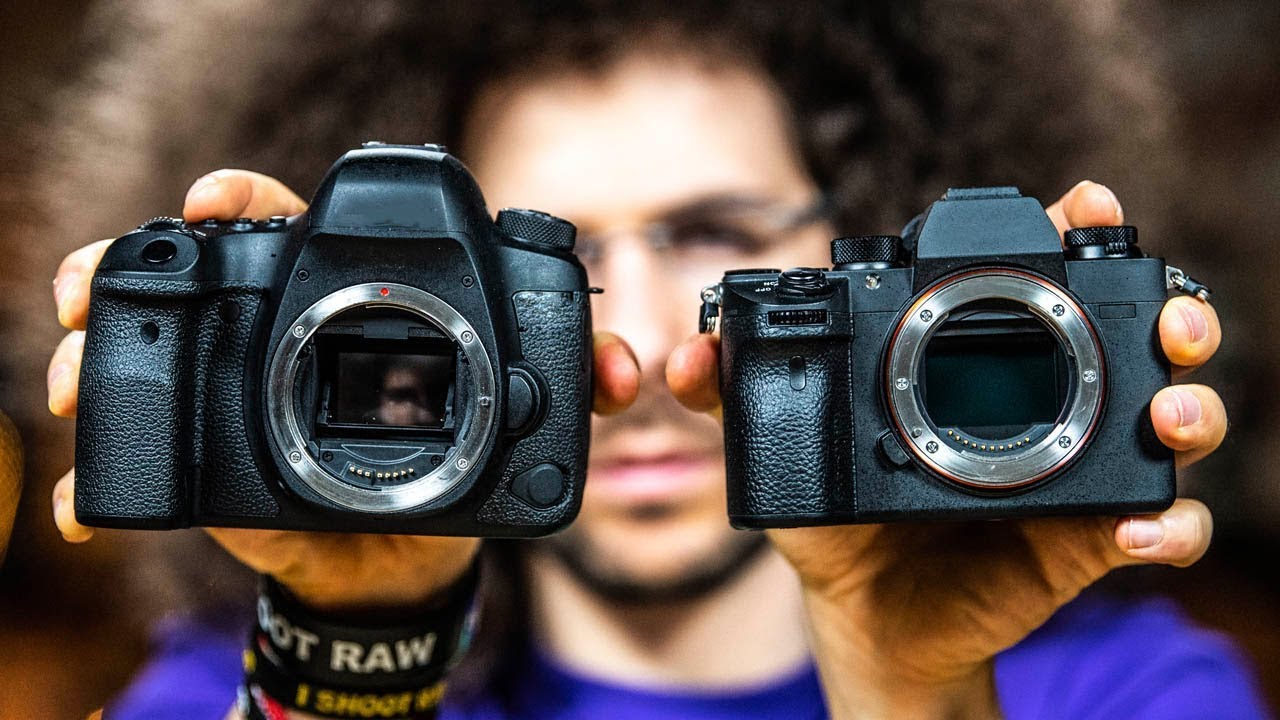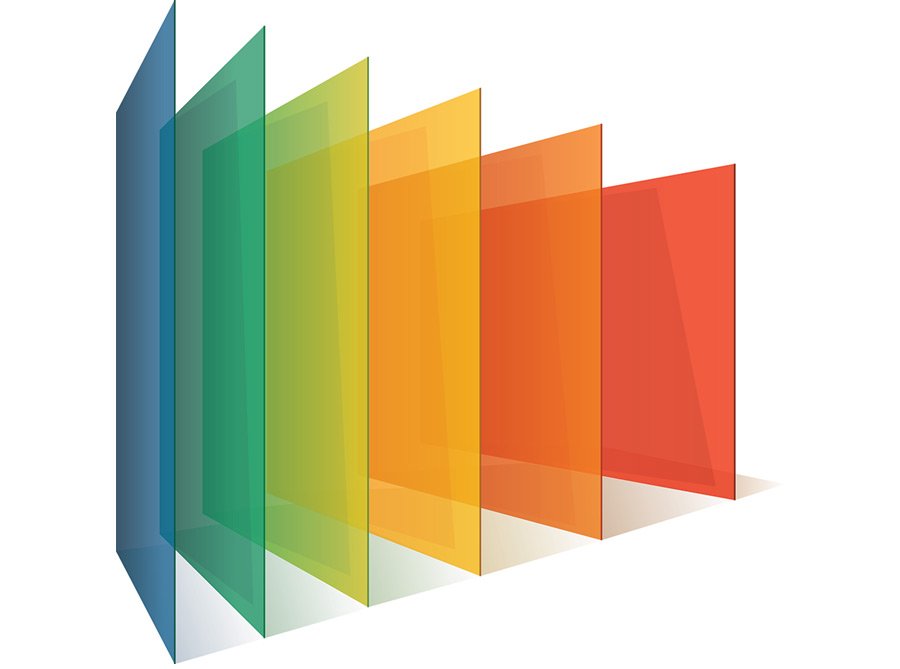Introduction
If you’re new to photography, the prospect of using a DSLR or mirrorless camera can be intimidating. But don’t worry, with a little bit of practice and understanding of the basics, you’ll be capturing stunning images in no time.
In this article, we’ll cover the essential functions and settings of a DSLR or mirrorless camera and how to use them effectively to take great photos.
Understanding the Basic Parts of a Camera
Before you start using a DSLR or mirrorless camera, it’s important to understand the different parts of the camera and their functions.
Lens
The lens is responsible for focusing the light onto the camera’s sensor. There are a wide variety of lenses available for different types of photography.
Sensor
The sensor is the heart of the camera, and it’s responsible for capturing the image. The larger the sensor, the better the image quality.
Shutter
The shutter controls the amount of time the sensor is exposed to light. A faster shutter speed can freeze action, while a slower shutter speed can create motion blur.
Aperture
The aperture controls the amount of light that enters the camera. A wider aperture allows more light to enter, while a narrower aperture lets in less light.
ISO
The ISO controls the camera’s sensitivity to light. A higher ISO setting can be useful in low light situations, but it can also introduce noise into the image.
Understanding Exposure
Exposure is one of the most important concepts in photography. Exposure refers to the amount of light that reaches the camera’s sensor, and it’s determined by three factors: shutter speed, aperture, and ISO.
Shutter Speed
The shutter speed refers to the amount of time the camera’s shutter is open. A faster shutter speed can freeze action, while a slower shutter speed can create motion blur. For example, a shutter speed of 1/1000th of a second will freeze the action of a moving subject, while a shutter speed of 1/30th of a second will create a motion blur effect.
Aperture
The aperture refers to the size of the opening in the lens that allows light to enter the camera. A wider aperture allows more light to enter, while a narrower aperture lets in less light. The aperture also affects the depth of field, which is the amount of the image that’s in focus. A wider aperture creates a shallow depth of field, while a narrower aperture creates a deep depth of field.
ISO
The ISO refers to the camera’s sensitivity to light. A higher ISO setting can be useful in low light situations, but it can also introduce noise into the image. It’s best to use the lowest ISO setting possible to avoid noise.
Manual Mode
Manual mode gives you complete control over the camera’s settings. In manual mode, you’ll need to adjust the shutter speed, aperture, and ISO settings yourself to get the right exposure. Manual mode is best for situations where you have time to set up your shot, and you want to have complete control over the final image.
Aperture Priority Mode
Aperture priority mode allows you to set the aperture, and the camera will automatically adjust the shutter speed to get the correct exposure. Aperture priority mode is useful when you want to control the depth of field in your images.
Shutter Priority Mode
Shutter priority mode allows you to set the shutter speed, and the camera will automatically adjust the aperture to get the correct exposure. Shutter priority mode is useful when you want to freeze action or create motion blur in your images.
Understanding Focus
Focus is another essential part of photography. A sharp, well-focused image is crucial to creating stunning photos. Most cameras have several focus modes, including:
Single point AF
This mode allows you to choose a single focus point, which
you can move around to focus on a specific part of your image. This mode is best for static subjects or when you have time to carefully set up your shot.
Continuous AF
This mode is useful for moving subjects, such as sports or wildlife photography. The camera will continuously adjust the focus to keep the subject in focus as it moves.
Manual focus
In manual focus mode, you have full control over the focus, and you’ll need to adjust it yourself. Manual focus is useful in low light situations or when the autofocus system is struggling to find the correct focus.
Understanding White Balance
White balance refers to the color temperature of the light in your image. Different light sources have different color temperatures, which can affect the overall color of your image. For example, indoor lighting can have a warm orange or yellow tint, while daylight has a cooler blue tint.
Most cameras have several white balance presets, such as daylight, cloudy, fluorescent, and tungsten. You can also set a custom white balance by taking a photo of a white or gray card in the same lighting conditions as your subject.
Understanding Metering
Metering refers to how the camera measures the light in the scene to determine the correct exposure. Most cameras have several metering modes, including:
Matrix metering
This mode measures the light across the entire frame and is best for balanced lighting conditions.
Center-weighted metering
This mode measures the light in the center of the frame and is best for portraits or when the subject is in the center of the frame.
Spot metering
This mode measures the light in a small area of the frame and is best for high-contrast scenes or when the subject is in a specific part of the frame.
Understanding Image Stabilization
Image stabilization refers to the technology that helps reduce camera shake and blur in your images. Most cameras have two types of image stabilization:
Lens-based stabilization
This type of image stabilization is built into the lens itself and helps reduce camera shake by stabilizing the lens.
In-body stabilization: This type of image stabilization is built into the camera body and helps reduce camera shake by stabilizing the camera.
Using the Camera
Now that you have a basic understanding of the different parts of the camera and their functions, it’s time to start using the camera.
-
Set the Mode
Choose the appropriate mode for your shooting situation. If you’re new to photography, start with aperture priority mode, which will allow you to control the depth of field and let the camera set the shutter speed automatically.
-
Select the ISO
Choose the ISO setting based on the lighting conditions. Use a low ISO setting in bright conditions, and increase the ISO in low light conditions.
-
Set the White Balance
Choose the appropriate white balance preset for your shooting situation or set a custom white balance.
-
Choose the Focus Mode
Choose the appropriate focus mode for your shooting situation. If you’re photographing a static subject, use single point AF. If you’re photographing a moving subject, use continuous AF.
-
Choose the Metering Mode
Choose the appropriate metering mode for your shooting situation. If you’re photographing a balanced scene, use matrix metering. If you’re photographing a high-contrast scene, use spot metering.
-
Compose the Shot
Compose your shot by adjusting the framing and the focus point.
-
Take the Shot
Press the shutter button to take the shot. If you’re using aperture priority mode, the camera will automatically set the shutter speed for the correct exposure.
Best Mirrorless Cameras
There are many best mirrorless cameras on the market, each with their own strengths and weaknesses. Here are a few of the best mirrorless cameras currently available:
-
Sony A7 III
The Sony A7 III is a full-frame mirrorless camera that offers excellent image quality, fast autofocus, and great low light performance. It has a 24-megapixel sensor, 5-axis image stabilization, and can shoot at up to 10 frames per second. The A7 III also has a tilting touchscreen display and a weather-sealed body.
-
Fujifilm X-T4
The Fujifilm X-T4 is a versatile mirrorless camera that is well-suited for both photography and video. It has a 26-megapixel APS-C sensor, in-body image stabilization, and can shoot at up to 15 frames per second. The X-T4 also has a flip-out touchscreen display and a weather-sealed body.
-
Panasonic Lumix GH5
The Panasonic Lumix GH5 is a mirrorless camera that is specifically designed for video. It has a 20-megapixel Micro Four Thirds sensor, 5-axis image stabilization, and can shoot 4K video at up to 60 frames per second. The GH5 also has a flip-out touchscreen display and a weather-sealed body.
-
Canon EOS R5
The Canon EOS R5 is a full-frame mirrorless camera that offers excellent image quality and fast autofocus. It has a 45-megapixel sensor, 5-axis image stabilization, and can shoot at up to 20 frames per second. The EOS R5 also has a flip-out touchscreen display and a weather-sealed body.
-
Nikon Z7 II
The Nikon Z7 II is a full-frame mirrorless camera that offers excellent image quality and fast autofocus. It has a 45-megapixel sensor, 5-axis image stabilization, and can shoot at up to 10 frames per second. The Z7 II also has a tilting touchscreen display and a weather-sealed body.
These are just a few of the best mirrorless cameras available, and there are many other great options out there depending on your specific needs and budget. When choosing a camera, it’s important to consider factors such as image quality, autofocus performance, video capabilities, and ergonomics.
Best DSLR Cameras
There are many great DSLR cameras on the market, each with their own strengths and weaknesses. Here are a few of the best DSLR cameras currently available:
-
Canon EOS 5D Mark IV
The Canon EOS 5D Mark IV is a full-frame DSLR camera that offers excellent image quality, fast autofocus, and great low light performance. It has a 30.4-megapixel sensor, 61-point autofocus system, and can shoot at up to 7 frames per second. The 5D Mark IV also has a weather-sealed body and a touchscreen display.
-
Nikon D850
The Nikon D850 is a full-frame DSLR camera that offers excellent image quality and fast autofocus. It has a 45.7-megapixel sensor, 153-point autofocus system, and can shoot at up to 7 frames per second. The D850 also has a tilting touchscreen display and a weather-sealed body.
-
Canon EOS 90D
The Canon EOS 90D is a versatile DSLR camera that is well-suited for both photography and video. It has a 32.5-megapixel APS-C sensor, 45-point autofocus system, and can shoot at up to 10 frames per second. The EOS 90D also has a flip-out touchscreen display and a weather-sealed body.
-
Nikon D500
The Nikon D500 is a crop-sensor DSLR camera that offers excellent image quality and fast autofocus. It has a 20.9-megapixel sensor, 153-point autofocus system, and can shoot at up to 10 frames per second. The D500 also has a tilting touchscreen display and a weather-sealed body.
-
Pentax K-1 Mark II
The Pentax K-1 Mark II is a full-frame DSLR camera that offers excellent image quality and in-body image stabilization. It has a 36.4-megapixel sensor, 33-point autofocus system, and can shoot at up to 4.4 frames per second. The K-1 Mark II also has a weather-sealed body and a tilting touchscreen display.
These are just a few of the best DSLR cameras available, and there are many other great options out there depending on your specific needs and budget. When choosing a camera, it’s important to consider factors such as image quality, autofocus performance, video capabilities, and ergonomics.
Conclusion
Using a DSLR or mirrorless camera can be intimidating at first, but with a little bit of practice and understanding of the basics, you’ll be capturing stunning images in no time. Remember to experiment with the different settings and modes to find what works best for you and your shooting situation. Keep in mind that practice makes perfect, so don’t be discouraged if your first few shots don’t turn out as expected. The more you practice, the more comfortable you’ll become with your camera, and the better your images will be.





